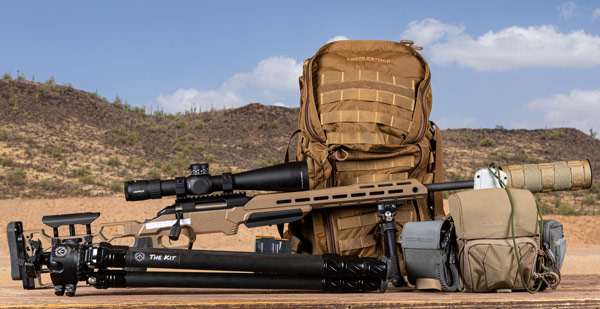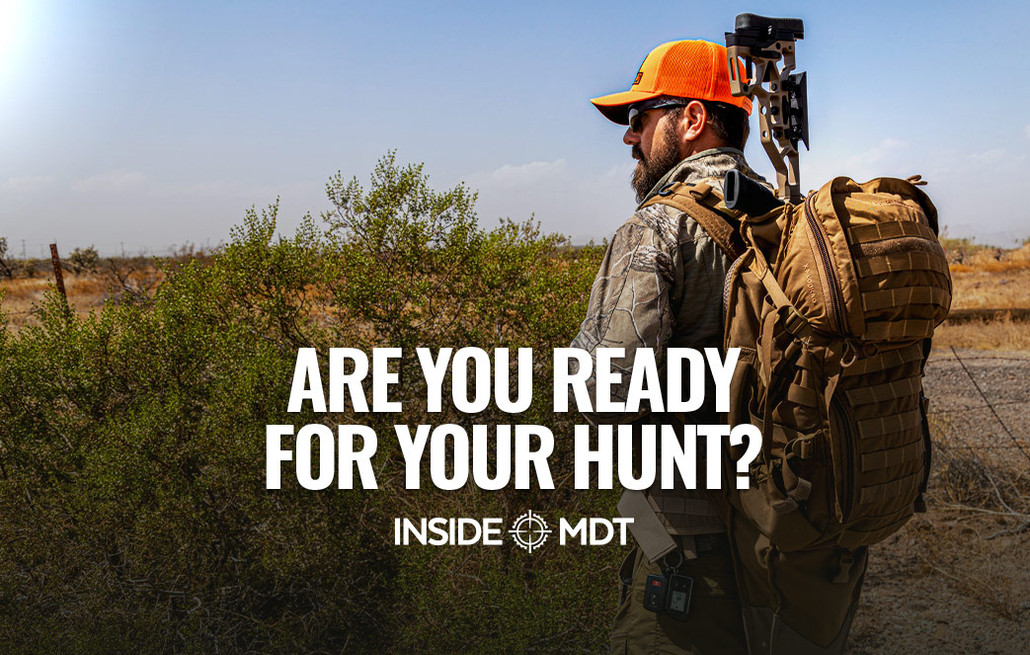Posted by Rob Orgel, Emergency Response Tactical on 2023 Oct 12th
Are You Ready for Your Hunt? - Inside MDT
Are you ready for hunting season? Let's create a checklist to ensure we're prepared for our upcoming hunts. First, we must ensure we've gathered proper data on a rifle. This means not trusting the ballistic calculator but actually experiencing your weapon's performance and understanding its level of consistency. This will include engagements out to prescribed distances where you are comfortable taking a shot.
Now, let's make sure we have the proper training. It's a good idea to invest in yourself and the success of your hunt by working with a trainer experienced in Long-Range shooting. They can help you get comfortable in awkward positions and make success more likely in situations you encounter on your hunt or during training sessions. We shouldn't assume that the bench we shoot from at the range will resemble shooting from a tripod or kneeling off a stump during the hunt. It's important to become trained in the nuances that lead to success when shooting from improvised positions, preferably a tripod at long distances.
More:Analysis: Long Range Hunting

Don't let nature ruin your shot. The wind is unpredictable and constantly changing. Understanding how your bullet behaves in various wind conditions is crucial, especially since you will likely encounter challenging winds. Your local range may have a windsock indicating wind direction and speed at various locations. However, learning to read the wind based on rising heat, tree, or grass movement is a good idea, as you'll likely not have windsocks on your hunt. Use natural cues to understand how wind affects your bullet at different distances. You can also use a Kestrel to make reading the wind easy, plus it will double as a ballistic calculator.
Getting yourself packed is essential. A proper backpack can make a big difference, especially when carrying heavy equipment like a rifle, water, ammunition, and other essentials. To be successful on your hunt, you might need to hike more than you initially expected. Choose a backpack that suits the type of animal you intend to harvest. Consider a tripod, depending on your hunting type, which can significantly extend your effective range. Sometimes, you won't have the opportunity for a prone position shot, and a kneeling or standing shot might be necessary, making tripod skills invaluable.
Finally, prepare yourself physically. Once you have the skills with your rifle and an appropriate backpack, training your body for the upcoming challenges is a good idea. Start with a running regimen to build cardio fitness, as it can be achieved quickly. Once you reach a certain distance and cardio level, move on to a weighted backpack, adding dumbbells, body armor, or water to simulate the weight you'll carry during the hunt. Seek inclines similar to those you'll encounter during your hunt. Additionally, practice hiking on uneven terrain to strengthen your stabilizer muscles, as paths are rare during hunts. Strong stabilizer muscles reduce the risk of rolling an ankle or falling on a hillside.
More:Fitness For Backcountry Hunting
Sources: I have hunted with many guides and gleaned much information through conversation. One of the things I enjoy most about guided hunts, aside from the obvious, is the sharing of expertise. Learning about the statistics of missed shots and where shots are likely to go is enlightening. I often ask guides my favorite question: What would you want your hunter to know before the hunt? This article is based on my own experiences and is designed to help you prepare for your hunt, whether it's self-guided or guided. Good luck and stay safe.
HUNTING ARTICLES FROM MDT
- Premium Lightweight Hunting Build
- Hunting Drills for Success
- Necessities for a Backcountry Hunt
- MeatEater: Dialing in your Kit for 2023
- Staying Mentally Strong in the Backcountry
- Fitness for Backcountry Hunting
- How Shooting Matches Makes You a Better Hunter
- Tips For A Successful Antelope Hunt
- Analysis: Long-Range Hunting
- Why The Triple Pull CKYE-POD is a Guides Best Friend
- Hunting In Inclement Weather
- Maximize Performance with Mental Imagery
- Sheep Hunting in Kyrgyzstan
ABOUT THE AUTHOR
Rob Orgel enlisted in the USMC in 2004 as an Infantry Rifleman (0311), serving with 3rd Bn 1st Marines in Iraq, including roles as a point man in OIF-3 & team leader in OIF-6. Later, he joined the 1st Marine Regiment, achieved the rank of Sergeant in 2010, & continued service in Afghanistan. Upon returning, he became a Combat Instructor at the School Of Infantry West. Transitioning to private military contracting with Securing Our Country (SOC), he instructed at the American Embassy in Iraq. In 2018, Rob became Chief Instructor at GPS Defense Sniper School, revamping their program. Now, as owner & lead instructor at Emergency Response Tactical, he focuses on training novice to advanced shooters on the range over 300 days a year.


 EUR
EUR
 Canadian Dollars
Canadian Dollars
